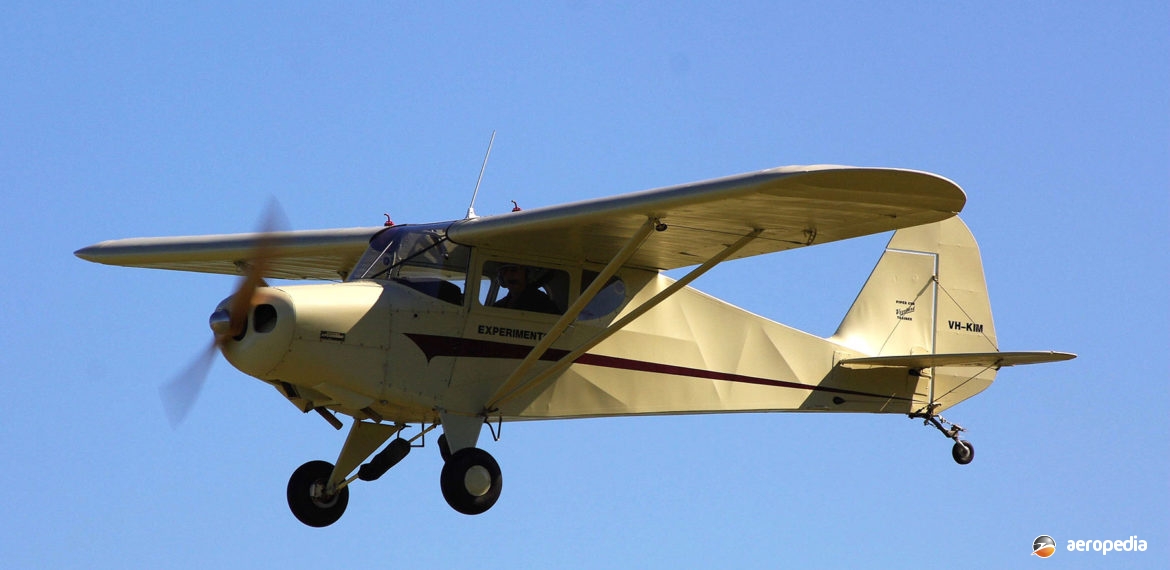Photograph:
Wag Aero Wag-A-Bond VH-KIM (c/n 773) at Cowra, NSW in March 2012 (David C Eyre)
Country of origin:
United States of America
Description:
Two-seat light cabin monoplane
Power Plant:
One 86 kw (115 hp) Lycoming O-235 four-cylinder horizontally-opposed air-cooled engine
Specifications:
- Wingspan: 8.96 m (29 ft 4 in)
- Length: 5.74 m (18 ft 8¼ in)
- Height: 1.82 m (6 ft)
- Wing area: 13.70 m² (147.5 sq ft)
- Max speed: 219 km/h (136 mph)
- Cruising speed: 199 km/h (124 mph)
- Rate of climb: 259 m/min (850 ft/min)
- Service ceiling: 4,267 m (14,000 ft)
- Take-off distance: 119 m (390 ft)
- Landing distance: 232 m (760 ft)
- Fuel capacity: 98 litres (21.5 Imp gals)
- Range: 998 km (620 miles)
- Empty weight: 329 kg (725 lb)
- Loaded weight: 658 kg (1,450 lb)
History:
The Wag-A-Bond Traveller was a replica of the Piper PA-15 Vagabond series but much improved, with extra strength, comfort and performance, using modern construction methods and materials. In recent years has been made available to amateur constructors in kit form by the manufacturers, Wag Aero Group of Lyons, Wisconsin, USA. Constructed of steel tube with fabric covering it was basically built along Piper lines. The type has proved popular in the US and a few examples have been built around the world.
Accommodation was provided for two, a tailwheel undercarriage being standard, and the power plant usually used was the Lycoming O-235. Piper built 500 PA-15 and PA-17 Vagabonds with engines in the 63 kw to 86 kw (85 hp to 115 hp range), usually Lycomings, between 1948 and 1950. Wag Aero produced plans for both variants.
A variant known as the Traveller had dual controls, shock-cord undercarriage, two doors and four windows compared to one door and two side windows in the PA-17. The Lycoming O-290 engine could also be fitted.
First of the type completed in this region was VH-KIM (c/n 773) registered in the Australian Capital Territory in May 1997.

